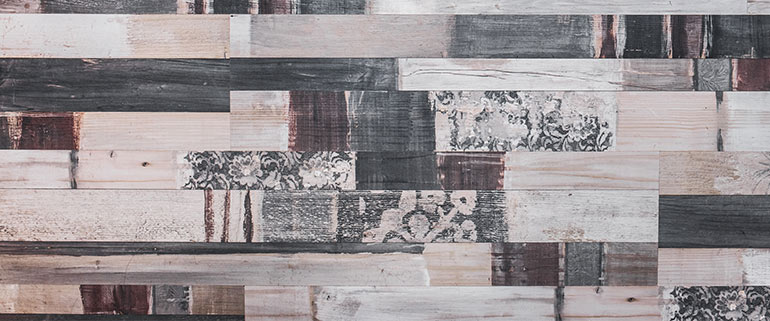
As the world embraces greener choices in home renovation, the flooring industry in the UK is responding with an impressive range of sustainable options. Homeowners are no longer just looking for stylish floors — they want materials that reduce environmental impact, improve energy efficiency, and promote healthier living spaces. In 2025, several flooring trends are set to define eco-conscious interior design, blending environmental responsibility with modern performance and aesthetics.
Reclaimed Wood Flooring: Timeless and Responsible
Reclaimed wood flooring is leading the way in sustainable design, offering a unique combination of environmental benefits and visual character. Sourced from old barns, industrial buildings, and historic properties, reclaimed wood preserves the beauty of aged timber while eliminating the need for fresh logging. Each plank carries a story, with weathered textures, knots, and colour variations that give rooms a warm and authentic feel. Beyond its charm, reclaimed wood contributes to a circular economy by reusing high-quality materials that would otherwise go to waste. Many UK flooring suppliers are expanding their reclaimed product ranges, recognising the growing demand from homeowners who want flooring that supports conservation efforts without compromising on elegance.
Engineered Wood: Efficient and Versatile
Engineered wood flooring has gained widespread popularity for its ability to combine sustainability with resilience and beauty. Unlike traditional solid wood, engineered wood uses a core made of layers of softwood or plywood, topped with a hardwood veneer. This structure significantly reduces the amount of precious hardwood required while maintaining the same luxurious surface. The layered composition also makes it more stable and resistant to expansion and contraction due to temperature and humidity changes — a key advantage in the UK's varied climate. Furthermore, engineered wood is well-suited for homes with underfloor heating, making it a smart and sustainable option for energy-efficient renovations. Whether you're working on a period home or a modern apartment, this flooring offers lasting performance and a refined appearance.
Cork Flooring: A Renewable Wonder
Cork flooring is making a strong comeback in the UK market thanks to its exceptional sustainability credentials and natural comfort. Harvested from the bark of cork oak trees, the process causes no harm to the tree, which regenerates its bark every nine years. This makes cork one of the most renewable materials used in flooring today. In addition to its green appeal, cork is naturally antimicrobial, hypoallergenic, and resistant to mould and mildew, making it ideal for allergy-prone households. Its natural cushioning offers a soft feel underfoot, while its thermal and acoustic insulation properties help create a quieter and more energy-efficient home. With its earthy aesthetic and eco-friendly origin, cork is becoming a go-to choice for environmentally aware renovators who want a blend of style and comfort.
Recycled LVT: Durability Meets Sustainability
Luxury Vinyl Tile (LVT) has long been praised for its water resistance, durability, and design versatility — and now it’s joining the sustainable revolution. Manufacturers are introducing recycled LVT collections that use reclaimed materials to reduce production waste and carbon emissions. These innovations allow homeowners to enjoy all the benefits of traditional vinyl flooring — such as easy maintenance, a vast range of styles, and suitability for high-traffic areas — while contributing to a closed-loop lifecycle. Some brands also incorporate phthalate-free materials and ensure recyclability at the end of the product's life. This makes recycled LVT a powerful solution for those seeking sustainable flooring in kitchens, bathrooms, or busy family spaces, without giving up practicality or style.
Low-VOC Finishes and Adhesives for Healthier Living
An often-overlooked aspect of sustainability is indoor air quality. In 2025, there is an increasing emphasis on using low-VOC (Volatile Organic Compounds) finishes and adhesives during floor installation. Traditional products can release harmful gases that affect respiratory health, particularly in enclosed or poorly ventilated areas. By contrast, low-VOC products minimise off-gassing and contribute to a cleaner, safer indoor environment, especially important for households with children, pets, or individuals with sensitivities. More flooring manufacturers are now formulating non-toxic finishes and glues that meet strict environmental and health standards, ensuring that the sustainability of your flooring goes beyond its raw materials to the entire installation process.
Conclusion: Flooring for a Better Tomorrow
The flooring choices we make today have long-term implications for both our homes and the planet. As we enter 2025, the UK flooring market is increasingly embracing options that support a greener future. From the storied charm of reclaimed wood and the renewable appeal of cork, to the efficient structure of engineered wood and innovations in recycled vinyl, homeowners now have more sustainable flooring solutions than ever before. Combined with low-emission finishes and eco-certified adhesives, these materials are paving the way toward healthier, more responsible interiors. Whether you’re renovating a single room or building an entirely new home, opting for sustainable flooring is a powerful way to combine aesthetics with environmental stewardship.